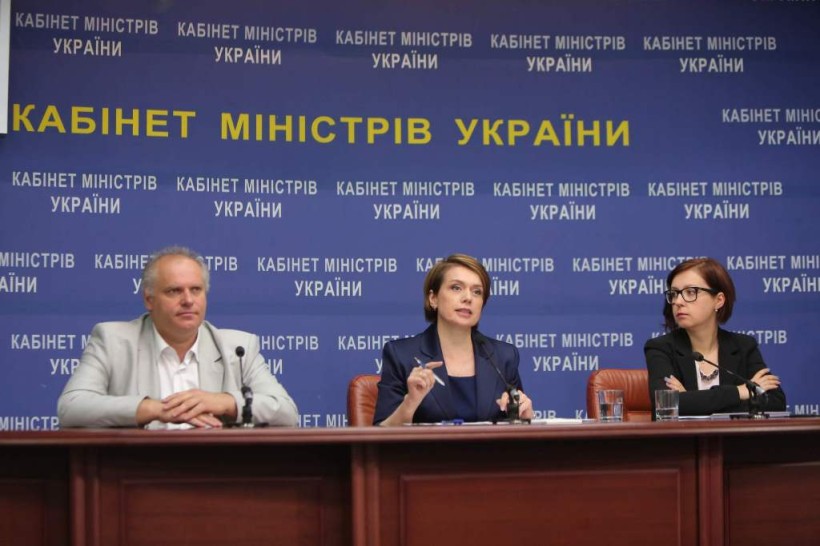University admissions: Liliya Hrynevych describes how innovations will make entry fairer in 2016

Liliya Hrynevych, Minister of Education and Science of Ukraine, spoke on the electronic university applications system and entry quotas for students from the Donbass and Crimea during a press conference on 8 July 8 that was devoted to Details of the 2016 University Admissions Process.
"For us the main task and the key value of the University Admissions Process was that it was fair. In addition to external independent testing (EIT), there will be an automated system to help place students funded through public spending, which predominantly takes into account the interests of the applicant. It chooses the priorities among the 15 applications that can be made for 5 disciplines at any higher education establishment in Ukraine", said Liliya Hrynevych
This system was made possible thanks to a full transition to a system of electronic applications. Last year it was also possible to apply through the Internet, but the ability to submit documents in paper form remained. A full transition to an electronic system allowed the technical feasibility of the idea to provide "a place to follow the student."
The Minister of Education and Science stressed that this apportionment will not only help provide places for students with the best EIT scores with a grant, but also to support the best universities, where school-leavers themselves target their higher education.
"Higher education establishments, which have applications from students with the best EIT scores, will have the opportunity to take 25% more students than the initial threshold set," said Liliya Hrynevych.
In the case of an applicant having difficulties applying electronically, they can apply to any establishment of higher education which has set in place special assistance offices and apply through the help of specialist universities.
"Being fair means that we also must provide higher education for children despite the events that our country is suffering from at this time, outside the realms of Ukrainian education. In particular, the occupation of Crimea by Russia, and the territories outside government control beyond the Russian forces boundary line in Donbass", added Liliya Hrynevych .
She pointed out that these children are at a disadvantage regarding preparation for EIT, compared with school-leavers studying in free Ukraine. Therefore, children from these areas have two options. Firstly, to obtain an EIT certificate, for which the Ministry has specially organized two additional sessions, and apply to any higher education school in Ukraine as part of the normal procedures. Another option is to apply having entered for entrance exams at one of those on the list of specially selected universities.
"For students from the Crimea there is a list of 12 such establishments of higher education that are in 7 cities of Ukraine. These schools are the Crimea-Ukraine open centres and there they can submit to these educational centres a declaration where they formally state their desire to continue education. They also must pass the exams in Ukrainian Language and the History of Ukraine to prove that they are willing to study in Ukrainian schools. This gives the opportunity for residents of illegally-occupied Crimea to take exams according to their chosen profession and obtain a place as a first-year student where they can retake the National Final School Exams and obtain a Ukrainian certificate", explained the Minister of Education and Science.
Similar procedures are working well for children resident in the uncontrolled territories of Donbass and in no-go areas. The main difference is that if the children choose to apply by entrance exams, and not with an EIT certificate, they can do this through the Donbass-Ukraine educational centres, and enter universities evacuated from the Donbass, as well as those that are on territory controlled by Ukraine in the Donetsk and Lugansk region.
The Director of the Department of Higher Education noted that the quota level for entry funded by public spending incorporating entrance examinations in selected universities should not exceed 30% of total national Budget allocation. Thus, the quota for students from Crimea and Donbas should not impact the rights of ordinary applicants, as maximum quota is approximately of an equal percentage, which can be increased in the funding of universities that in great demand and popularity among students.
It should be noted that electronic applications will benefit fully only those applicants who have a certificate of secondary education and an EIT certificate for 2016 and wish to enroll for full-time study as a junior bachelor, bachelor (master and specialist for medicine, pharmaceutical or veterinary disciplines). Each entrant in 2016 will be able to submit 15 applications for 5 different specialisation at any university of their choice.